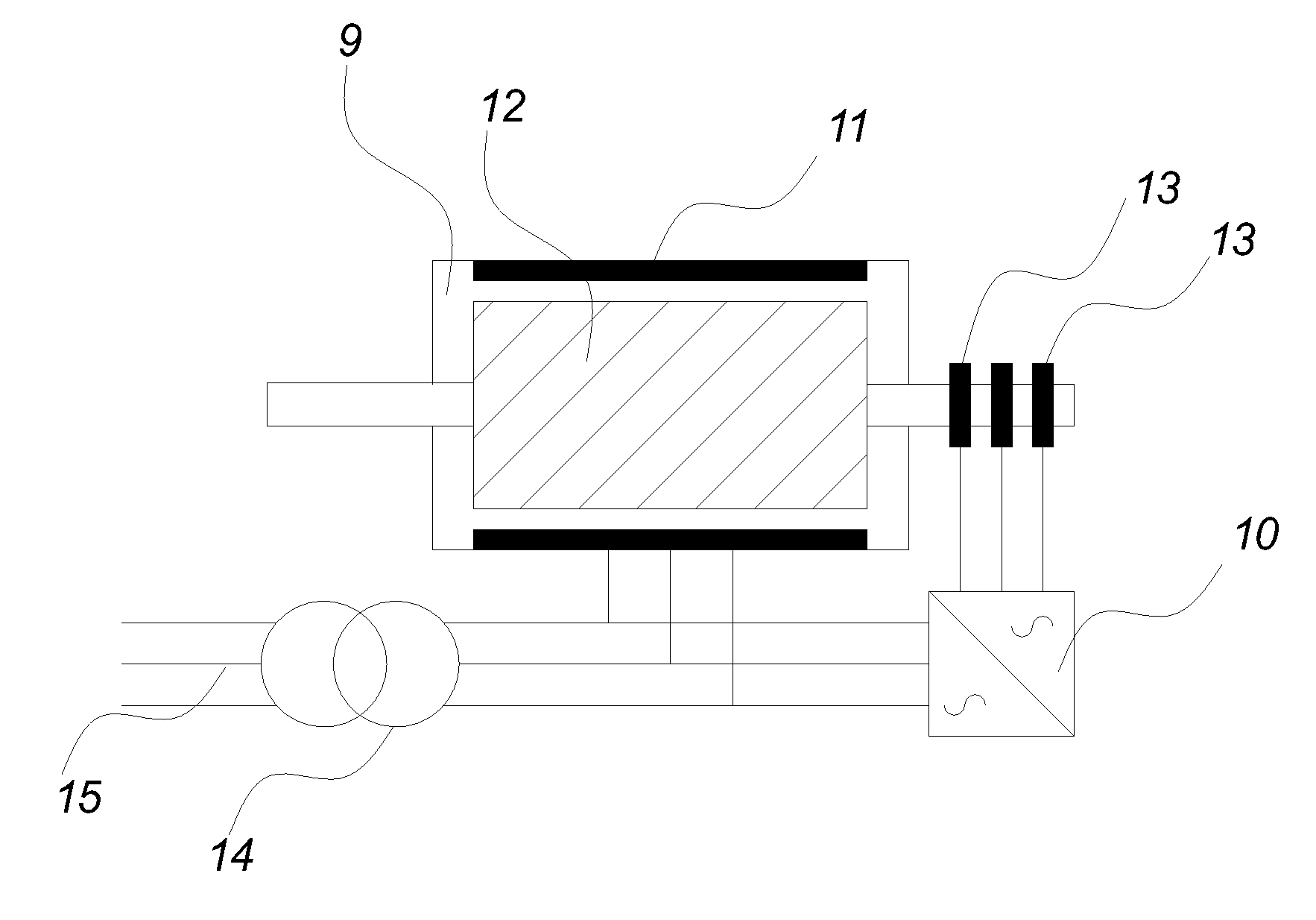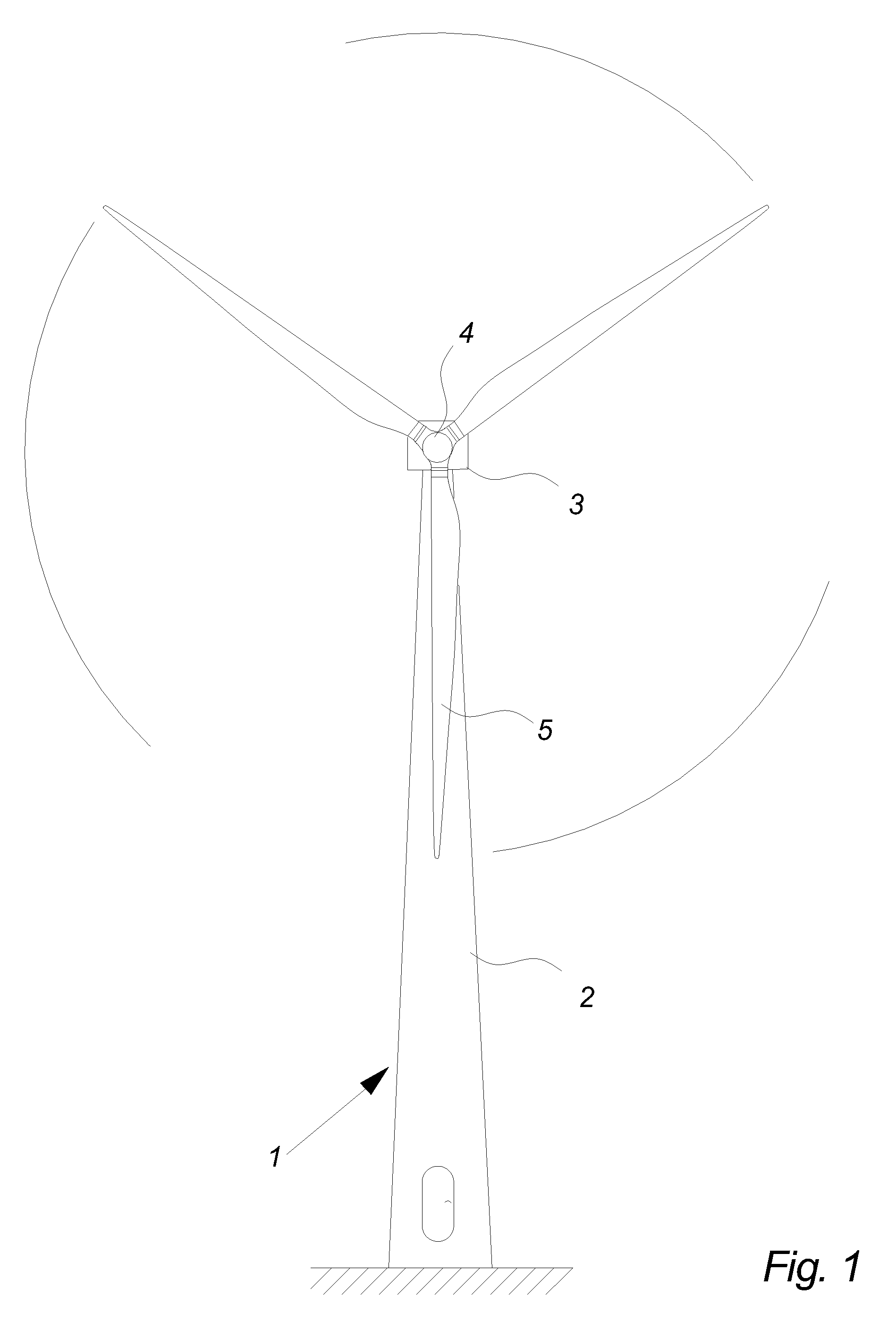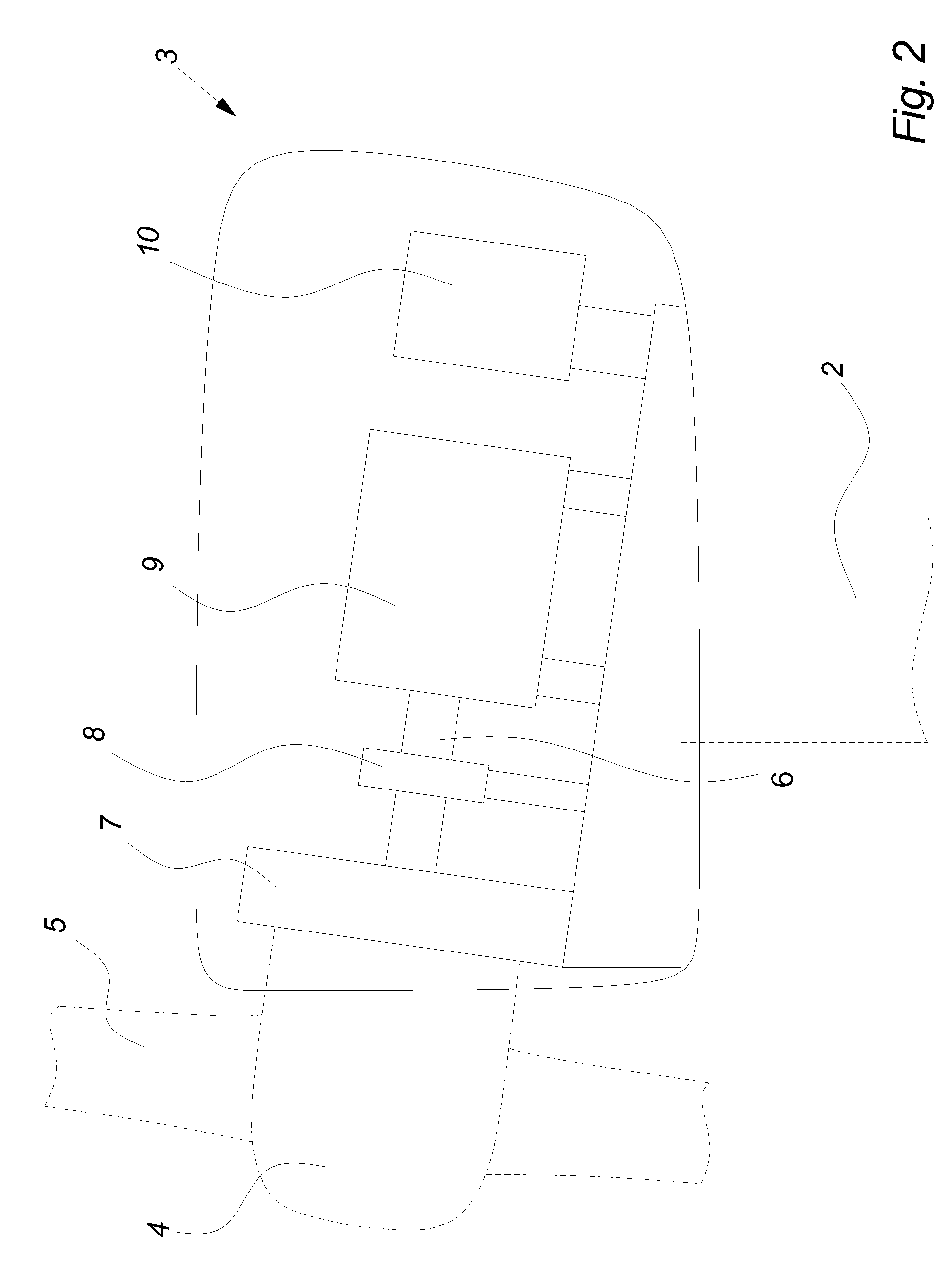Variable Speed Wind Turbine With Doubly-Fed Induction Generator Compensated For Varying Rotor Speed
a variable speed wind turbine and variable speed technology, applied in the direction of motors, engine control, position/direction control, etc., can solve the problems of increasing the complexity of the electrical system of a modern wind turbine, the speed range of the system, and the requirement for ac-ac converters to handle the full output power of the turbine, so as to reduce the oscillations and reduce the instability of the control system.
- Summary
- Abstract
- Description
- Claims
- Application Information
AI Technical Summary
Benefits of technology
Problems solved by technology
Method used
Image
Examples
Embodiment Construction
[0065]In the following is disclosed an embodiment of the present invention with compensation means for making the generator transfer function independent of varying rotor speed, comprising a lead filter for damping oscillations around the grid frequency.
[0066]FIG. 1 illustrates a modern wind turbine 1, comprising a tower 2 and a wind turbine nacelle 3 positioned on top of the tower 2. The wind turbine rotor 4 comprising three wind turbine blades 5 is connected to the nacelle 3 through the low speed shaft (not shown) which extends from the front of the nacelle 3.
[0067]FIG. 2 illustrates a simplified cross section of a wind turbine nacelle 3, as seen from the side. In the shown embodiment, the drive train 6 in the nacelle 3 comprises a gear 7, a breaking system 8, a generator 9 and an AC-AC converter 10.
[0068]The principle schematics of a standard Doubly-Fed Induction Generator 9 is illustrated in FIG. 3, where the stator 11 is connected to the grid 15 via a grid transformer 14 and th...
PUM
 Login to View More
Login to View More Abstract
Description
Claims
Application Information
 Login to View More
Login to View More - R&D
- Intellectual Property
- Life Sciences
- Materials
- Tech Scout
- Unparalleled Data Quality
- Higher Quality Content
- 60% Fewer Hallucinations
Browse by: Latest US Patents, China's latest patents, Technical Efficacy Thesaurus, Application Domain, Technology Topic, Popular Technical Reports.
© 2025 PatSnap. All rights reserved.Legal|Privacy policy|Modern Slavery Act Transparency Statement|Sitemap|About US| Contact US: help@patsnap.com



